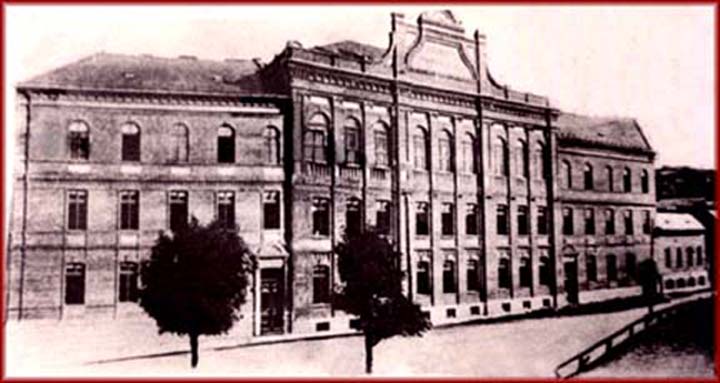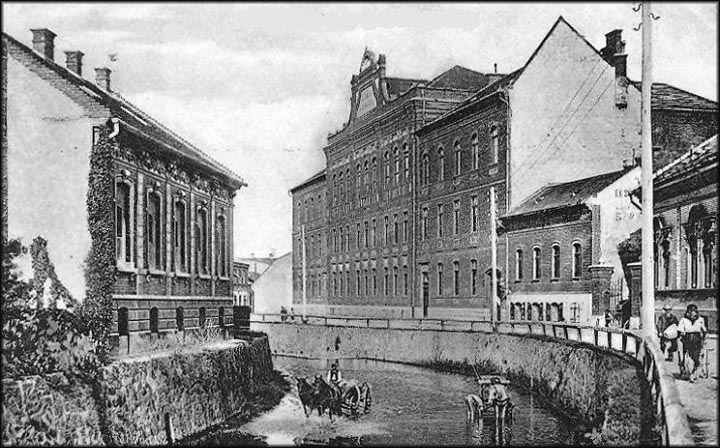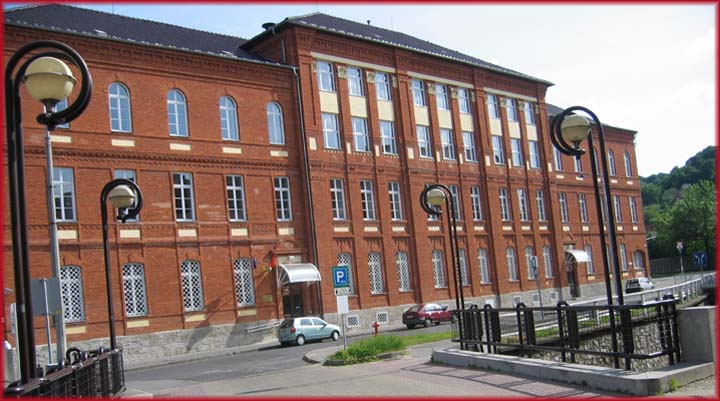




Elisabet [Erzsebet] Jewish Elementary School (Miskolc, 1901)
The first heder opened in Miskolc in 1734 and the first Talmud Torah around 1820. Both schools were likely to have included Jewish studies and secular subjects.[1] By 1850, the Talmud Torah had 709 pupils.[2] Other Jewish schools later were established, both by those who felt that a more orthodox curriculum was required and by those who were less committed to religion.[3]
The dedication of the Miskolc Jewish community to the education of its children was apparent, both in the 1841 authorization of funding for the construction of new schools and again in the 1841 promulgation by the kehillah of a provision guaranteeing free education to orphans and abandoned children.[4] By 1895, there were 1611 Jewish children being schooled, a figure that had increased to to 2571 by 1925. These figures began decreasing until, on the eve of the deportations, there were 1588 Jewish children being educated in Miskolc.[5]

Another view of the Elisabet [Erzsebet] Jewish Elementary School)
In 1901, the jewel of Miskolc Jewish children's education opened its doors: the Elisabet Jewish Elementary School, named in honor of the then-Empress of Austro-Hungary. This imposing edifice included 18 classrooms, science laboratories, a gymnasium, a library, a conference room for teachers, administrative offices, and a room for women's crafts. There was a large auditorium, with a capacity of 800, which was used both for student functions and as an over-flow chapel on Jewish holidays. Beginning in 1919, during a period when Jewish girls were not allowed to enrol in the city's already over-crowded Hungarian public schools, a higher-elementary school for Jewish girls was located temporarily inside the Elisabet school. In November, 1928, the community established Hungary's first Jewish seminary for female teachers, with Hebrew as an integral part of the curriculum.[6]
One scholar characterized the educational institutions in Miskolc as "among the most developed and ramified throughout the country. There were three yeshivot, an elementary school, two sub-secondary schools, and the only seminary for female teachers in Hungary. The Hasidim established a separate elementary school."[7]
After the war, the Russian authorities governing Hungary returned "naked buildings" to the remnant of the Jewish community: schools with "no doors, windows, laboratories, libraries, benches, or any other facilities." Amidst the post-war chaos, the "true miracle" (as Rabbi Paszternak put it) was that ten children who had been "hidden in the countryside came back unscathed."[8]

Former building of the Elisabet [Erzsebet] Jewish Elementary School (Miskolc, 2005)
The building was taken over by the government and renovated.
Credits: Text and page design copyrighted © 2008 by Helene Kenvin. Photograph of the school in 2005 copyrighted © 2008 by John J. Kovacs. Page created by Helene Kenvin. All rights reserved.